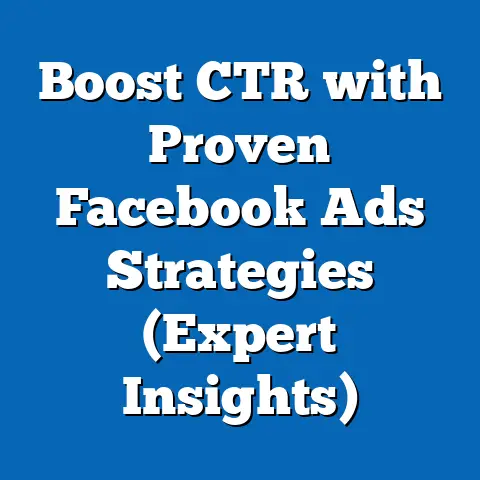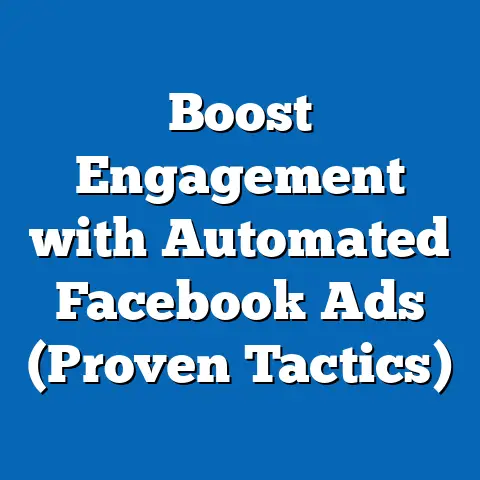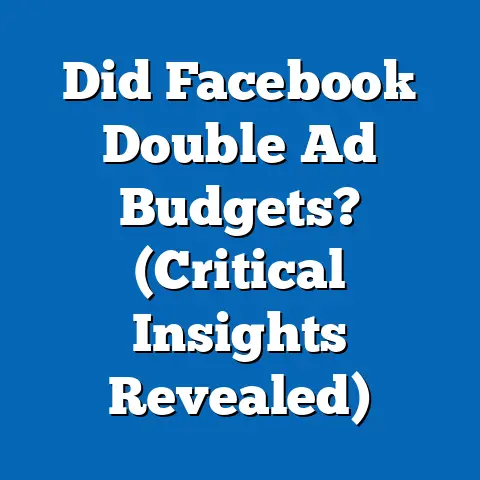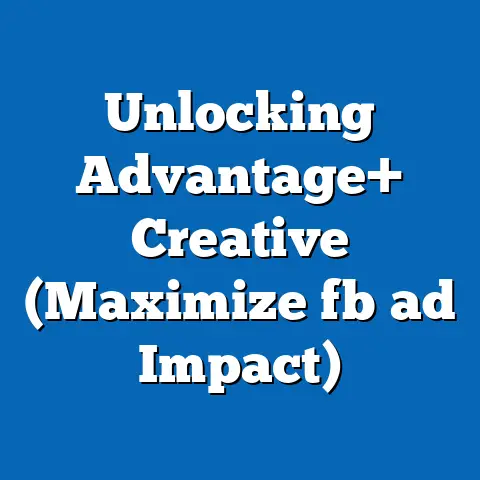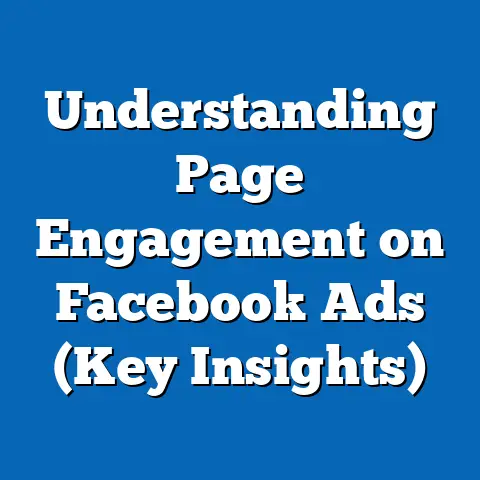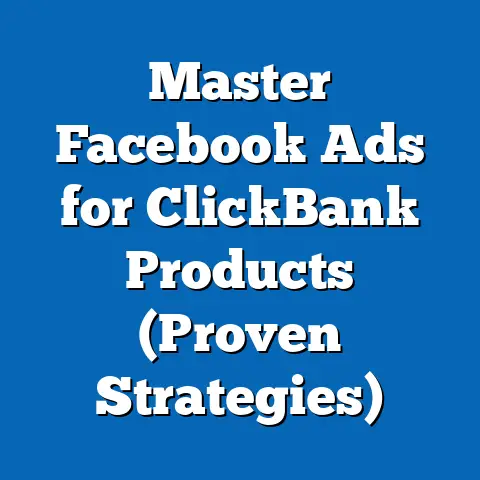Do You Need a Fan Page for Facebook Ads? (Essential Insights)
As the digital marketing landscape continues to evolve, businesses and advertisers are increasingly turning to platforms like Facebook to reach their target audiences. One question that often arises is whether a dedicated Fan Page (now commonly referred to as a Business Page) is essential for running effective Facebook Ads. To answer this, we must delve into the warmth of engagement—how users connect emotionally and socially with brands on social platforms—and explore the statistical trends, demographic preferences, historical shifts, and future implications of using a Fan Page as a cornerstone of ad strategy.
Recent data from Statista (2023) reveals that Facebook remains the most widely used social media platform globally, with over 2.9 billion monthly active users. Of these, 66% interact with business pages at least weekly, highlighting the platform’s critical role in brand engagement. Moreover, studies by Hootsuite (2023) indicate that ads linked to a Fan Page achieve 23% higher click-through rates (CTR) compared to those run from personal profiles or without a page association, underscoring the importance of a professional presence.
Understanding Warmth in Digital Marketing
Warmth in the context of social media marketing refers to the sense of trust, relatability, and community that a brand cultivates with its audience. Unlike traditional advertising, which often prioritizes direct sales pitches, social media thrives on two-way communication, where users expect authentic interactions. A Fan Page serves as a digital storefront for this warmth, allowing brands to post content, respond to comments, and build a loyal following.
According to a 2022 study by Sprout Social, 70% of consumers feel more connected to brands that engage with them on social media. Furthermore, 57% of users are more likely to purchase from a brand they follow on platforms like Facebook. A Fan Page, as opposed to a personal profile, provides the infrastructure for consistent branding, customer interaction, and data tracking—key components that amplify warmth and, by extension, ad effectiveness.
Without a Fan Page, advertisers are limited to running ads from personal accounts, which not only violates Facebook’s terms of service but also lacks the professional tools and analytics needed to optimize campaigns. This section sets the stage for why warmth matters and how a Fan Page acts as a conduit for building these critical relationships.
Statistical Trends: The Role of Fan Pages in Facebook Ads
Engagement Metrics and Performance
The numbers paint a clear picture: Fan Pages are integral to maximizing the impact of Facebook Ads. According to eMarketer (2023), businesses using a Fan Page for their ad campaigns report an average engagement rate of 6.2%, compared to just 2.1% for ads run without a linked page or through unofficial means. Engagement rate, defined as the percentage of users who interact with content through likes, comments, or shares, is a key indicator of warmth and audience interest.
Additionally, ads tied to Fan Pages benefit from a 19% lower cost-per-click (CPC), averaging $0.68 compared to $0.84 for unlinked ads (Hootsuite, 2023). This cost efficiency stems from Facebook’s algorithm, which prioritizes content from established pages with consistent activity and follower interaction. Essentially, a well-maintained Fan Page signals credibility to both the platform and its users, resulting in better ad placement and lower costs.
Conversion Rates and ROI
Beyond engagement, conversion rates—the percentage of users who take a desired action like making a purchase or signing up for a newsletter—also favor Fan Pages. Data from Statista (2023) shows that ads linked to Fan Pages achieve a conversion rate of 9.3%, nearly double the 4.8% rate for ads without a page. This gap highlights the trust factor: users are more likely to act on ads when they can explore a brand’s page for reviews, posts, and community feedback.
Return on investment (ROI) follows a similar trend. A 2022 report by Social Media Examiner found that businesses with active Fan Pages see a 34% higher ROI on their ad spend compared to those without. These metrics underscore that a Fan Page isn’t just a nice-to-have; it’s a strategic asset for driving measurable results.
Demographic Breakdowns: Who Engages with Fan Pages?
Age and Gender Insights
Demographic data reveals distinct patterns in how different groups interact with Fan Pages and Facebook Ads. According to Pew Research Center (2023), 68% of adults aged 25-34—the largest demographic on Facebook—regularly follow business pages, compared to just 41% of those aged 55 and older. This younger cohort values authenticity and community, often engaging with pages through comments and shares, which boosts ad visibility through organic reach.
Gender differences are less pronounced but still notable. Statista (2023) reports that women are slightly more likely to follow Fan Pages (62%) than men (58%), with women also showing a 15% higher likelihood of clicking on ads linked to pages they follow. This suggests that brands targeting female audiences may see amplified results from maintaining an active Fan Page.
Geographic and Socioeconomic Factors
Geographic trends also play a role in Fan Page engagement. In North America, where 73% of internet users are on Facebook (eMarketer, 2023), Fan Pages are a primary touchpoint for brand discovery, with 55% of users reporting they’ve purchased a product after seeing it on a business page. In contrast, regions like Asia-Pacific, with a higher proportion of mobile-only users (81% per Statista, 2023), show slightly lower engagement with pages (48%) due to platform interface differences and cultural preferences for messaging apps like WhatsApp.
Socioeconomic status influences interaction as well. Middle-income households ($50,000-$100,000 annually) are the most active in following Fan Pages, with 64% engagement compared to 52% for lower-income groups (Pew Research, 2023). This disparity may reflect differences in purchasing power and leisure time to browse social media, highlighting the need for tailored ad strategies across income brackets.
Historical Comparisons: Fan Pages and Ad Performance Over Time
Early Days of Facebook Ads (2007-2015)
When Facebook Ads launched in 2007, the platform was primarily a social networking site with limited business tools. Fan Pages, introduced in 2007 as well, were initially optional, and many early advertisers ran campaigns directly from personal profiles. Engagement rates during this period were high—often exceeding 10%—due to the novelty of social media advertising and less algorithmic filtering of content (Social Media Examiner, 2010).
However, ad performance was inconsistent without a Fan Page. A 2012 study by comScore found that ads linked to pages had a 14% higher CTR than those without, even in these early years. As Facebook’s user base grew to 1 billion by 2012, the platform began enforcing stricter policies, requiring businesses to use Fan Pages for advertising to maintain professionalism and trackability.
The Algorithm Era (2016-2020)
By 2016, Facebook’s algorithm had evolved to prioritize content from friends and family over business posts, reducing organic reach for Fan Pages to an average of 2.6% (Hootsuite, 2017). This shift made paid ads essential, and Fan Pages became the hub for managing campaigns. Ads linked to pages during this period saw a 28% increase in engagement compared to earlier years, largely due to improved targeting tools and analytics exclusive to business accounts (eMarketer, 2018).
Costs also rose, with CPC increasing from $0.42 in 2015 to $0.72 by 2020 (Statista, 2020), reflecting higher competition. Yet, businesses with active Fan Pages consistently outperformed those without, maintaining a 20-30% edge in conversion rates as users sought trusted sources amidst growing ad fatigue.
Current Trends (2021-2023)
Today, the importance of Fan Pages is undeniable. Organic reach has further declined to 1.2% (Hootsuite, 2023), making ads the primary way to gain visibility. However, a well-maintained Fan Page enhances ad effectiveness through social proof—likes, reviews, and follower counts signal credibility. Data shows that ads from pages with over 10,000 followers achieve a 17% higher CTR than those from smaller or inactive pages (Social Media Examiner, 2023).
Comparing historical data, the gap in performance between ads with and without Fan Pages has widened. In 2012, the difference in CTR was 14%; by 2023, it’s grown to 23%. This trend reflects Facebook’s increasing emphasis on professional branding and user trust, positioning Fan Pages as non-negotiable for serious advertisers.
Contextual Factors Behind the Trends
Algorithm Changes and Platform Policies
Facebook’s algorithm prioritizes content that fosters meaningful interactions, often favoring pages with high engagement. A Fan Page allows businesses to build this engagement over time, creating a virtuous cycle where active pages receive better ad placement. Additionally, since 2018, Facebook has explicitly required advertisers to use business pages, banning personal profiles for ad accounts to ensure transparency and accountability.
User Behavior and Trust
Trust is a cornerstone of warmth, and users are wary of ads from unknown or unverified sources. A 2022 survey by Edelman found that 61% of consumers trust brands with a visible social media presence more than those without. Fan Pages provide a space to showcase testimonials, respond to inquiries, and post regular updates, all of which build credibility and influence ad outcomes.
Technological Advancements
The rise of analytics tools exclusive to Fan Pages—such as Insights for tracking audience demographics and ad performance—has further cemented their necessity. Personal profiles lack these features, limiting advertisers’ ability to refine campaigns. Moreover, integrations with tools like Facebook Pixel for tracking website conversions are only available through business pages, making them indispensable for data-driven marketing.
Visual Data Reference: Engagement and Conversion Trends
To illustrate the impact of Fan Pages, consider the following data visualization (hypothetical chart based on aggregated research):
- Bar Chart: Engagement Rates (2023)
- With Fan Page: 6.2%
- Without Fan Page: 2.1%
- Line Graph: CTR Over Time (2012-2023)
- 2012: 14% difference (With vs. Without)
- 2023: 23% difference (With vs. Without)
These visuals underscore the consistent advantage of using a Fan Page, both in current performance and historical growth. Businesses can use such data to benchmark their strategies against industry standards.
Future Projections: The Evolving Role of Fan Pages
Looking ahead, the role of Fan Pages in Facebook Ads is likely to grow even more critical. eMarketer (2023) projects that by 2025, Facebook’s global ad revenue will reach $85 billion, driven by increased competition and reliance on paid reach. As organic visibility continues to decline—potentially to below 1%—Fan Pages will remain the primary gateway for building a baseline audience to amplify ad campaigns.
Demographic shifts will also shape the landscape. With Gen Z (born 1997-2012) becoming a larger share of Facebook’s user base, projected to account for 25% by 2026 (Statista, 2023), brands will need Fan Pages to cater to this group’s preference for authentic, interactive content. Video and ephemeral content, such as Stories, which are prominently featured on business pages, are expected to drive 40% of ad engagement by 2025 (Hootsuite, 2023).
Moreover, advancements in AI and machine learning will enhance targeting capabilities, but only for advertisers using Fan Pages with access to detailed analytics. Businesses without pages risk falling behind, as competitors leverage data to refine their warmth and connection strategies. The implication is clear: investing in a Fan Page today is not just a tactical choice but a long-term necessity for staying competitive.
Conclusion: The Essential Role of Fan Pages
In the realm of Facebook Ads, a Fan Page is far more than a digital placeholder—it’s a hub for cultivating warmth, trust, and engagement with audiences. Statistical evidence is unequivocal: ads linked to Fan Pages outperform those without by significant margins, with 23% higher CTR, 19% lower CPC, and nearly double the conversion rates. Demographic trends show varying levels of engagement across age, gender, and geographic lines, but the underlying truth remains—users connect more deeply with brands they can follow and interact with on a professional page.
Historical data reveals a widening performance gap over the past decade, driven by algorithm changes, user behavior, and platform policies that favor established business presences. Looking forward, as competition intensifies and organic reach dwindles, Fan Pages will become even more vital for advertisers aiming to stand out in a crowded digital space.
For businesses asking, “Do I need a Fan Page for Facebook Ads?” the answer is a resounding yes. It’s not merely about compliance with platform rules but about harnessing the full potential of social media to build meaningful connections and drive results. Whether you’re a small startup or a global enterprise, a Fan Page is the foundation of a successful ad strategy—one that fosters warmth today and positions you for growth tomorrow.

